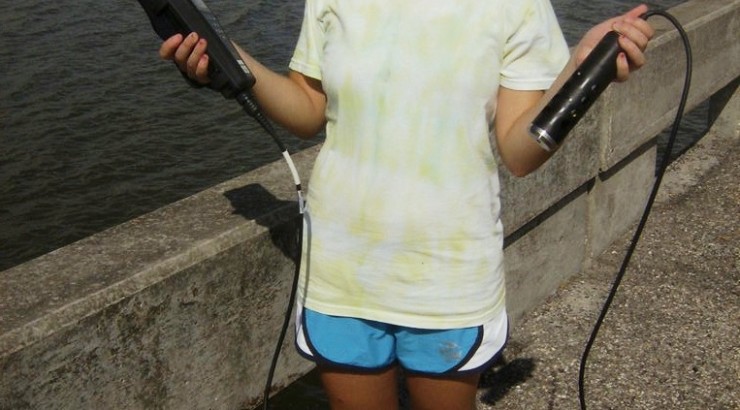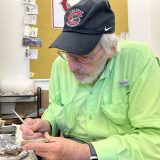
Student spends summer awash in research, thanks to National Science Foundation
August 30, 2012
She dodged lightning storms to scoop water from Corpus Christi Bay off the Gulf of Mexico, encountered “interesting” bugs, swam in an ocean warm as a bubble bath, and watched her colleagues’ research discovery make the evening news.
In other words, it was a pretty good summer for Jennifer Feinstein ’14, a National Science Foundation REU (research experiences for undergraduates) intern assigned to Texas A&M University, Corpus Christi.
“I’ve learned so much in such a short amount of time,” Feinstein said, speaking by phone from her summer assignment. “And I’m very well-versed in phytoplankton now, that’s for sure.”
The environmental science and policy major has literally been awash in the tiny ocean flora as part of her work. Most of her tasks involved collecting and studying the bay’s water to see how much phytoplankton were thriving there before, during and after storms in Oso Bay, a small section of the vast Corpus Christi Bay. In addition to measuring the phytoplankton levels, Feinstein also assessed a variety of other components, including salinity, carbon, chlorophyll and other nutrients present in the bay.
Scientists in the region need the field research to better understand the recent detection of a dangerous microorganism in the bay that could affect shellfish and the people who eat it. Shortly after Feinstein arrived in Texas, her fellow researchers’ findings were reported in a local news broadcast, which included a photograph of a lab-coat-wearing Feinstein.
The lab work taught her some great skills – “Sitting behind that microscope for three hours counting a sample definitely takes a lot of patience” – but the field work was a real eye-opener, she says.
“Going out in the field is definitely a lot of fun because you get to be outside and be hands on,” she said. “But it’s pretty exhausting. You get up early. There were a lot of 5 a.m. and 6 a.m. days.”
The paid internship, which also included travel and housing costs, ends this week after Feinstein presents a report to her fellow lab workers and mentoring professor summarizing her findings. Back at Chapman this fall, Feinstein will resume her job as a student civic engagement assistant.
In addition, she’ll begin another internship, this one on campus with Mackenzie H. Crigger, Chapman’s energy conservation and sustainability manager. Fewer phytoplankton, no doubt, but it sounds like another great green experience ahead.

